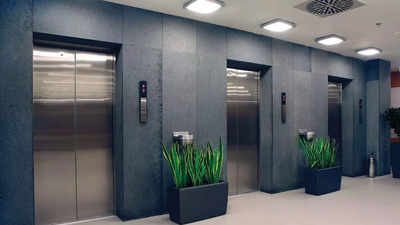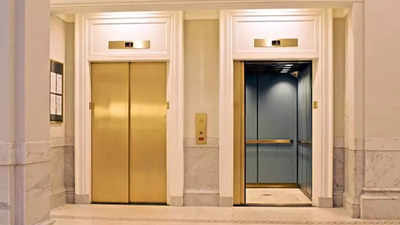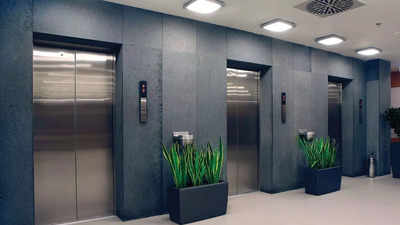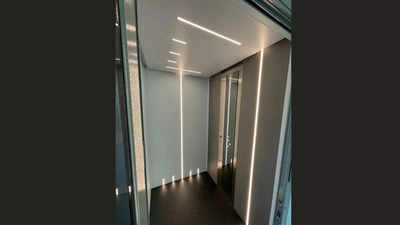Why are mirrors fitted inside the lift? The reasons will leave you surprised

If you ever stepped into an elevator and found yourself checking your reflection, then you are not alone. Mirrors in lifts, however, go further than aesthetic purposes. They range from increasing safety to relieving anxiety, and the reasons for their installation are far more substantial than most people may think.
Mirrors in elevators aren’t just for looks; they play a big role in making the ride more comfortable and safe. From helping people feel less cramped to improving accessibility and adding a bit of style, mirrors serve many purposes that go beyond what we see at first glance.

The psychological factor
The first reason mirrors are installed in elevators is psycho-social comfort. Most people fear or get anxious when they are locked up into a small, enclosed space. A mirror makes one perceive more space, making the lift not feel cramped and to feel less confined, psychologists. Many people may feel more claustrophobic in absence of mirrors. It may also help to relieve the physical symptoms of anxiety, such as fast heartbeat and labored breathing, which most people tend to have when they feel trapped in a small place. Seeing yourself in mirror can provide a psychological comfort.
Mirrors can also distract people, giving them something to focus on besides the confined space. This small break in focus can make the ride feel faster and less tense. Plus, seeing a familiar face—your own—can be soothing, helping people feel less alone and more at ease during the ride.
The safety factor

Safety is another important element. Mirrors allow the occupants inside to know who is behind them. In a sense, this makes them more conscious of who surrounds them, which can help curb such improper actions and, to a greater degree, has been employed to monitor theft or thwart assaults. The clearness that the mirror introduces into the elevator helps the occupants in it feel safer.
According to reports, in Japan, mirrors are also utility tools for accessibility. In small or specially built lifts for people with disabilities, in vehicles, accessible to people who use wheelchairs, mirrors help in creating space where passengers may reverse in and out of the lift without necessarily turning around and thus avert accident cases and make the entire space friendly for wheelchair users.
Provides harmless distraction

Installing mirrors in the building can be another cause for distraction. People often find rides in the elevator dull or impatiently long. A glimpse into the mirror may make waiting worthwhile and provide harmless distraction to pass the time.
As a matter of fact, even the Elevator Association of Japan set it as a guideline to mount mirrors since they enhance comfort, security, and accessibility. Most probably, many would consider a mirror as a place where one could easily check their appearance, but these actually play a more significant, critical role in the overall comfort of a lift.
Without mirrors, people with claustrophobia may been further confined in a space which could elevate their anxiety and make their elevator experience a bit disturbing.

In a nutshell, elevator’ mirrors are about more than the elaborate use of reflection-it is rather a perceptive design for mental well-being as well as a guarantee for safety and the basis for easier access. When you ride a lift next time, you’ll see that there is much more than what catches your eye in that reflective surface.
Accessibility for All
For individuals with disabilities, mirrors in elevators can be particularly beneficial. They allow wheelchair users to easily maneuver and position themselves within the elevator. Passengers can also use mirrors to check for obstacles or other people in the cabin, facilitating smoother and safer entry and exit.
Moreover, mirrors can enhance the perception of space, making elevators feel less cramped and more inviting for everyone. They can also promote independence, as individuals can navigate their surroundings with greater confidence. Overall, the inclusion of mirrors in elevators plays a crucial role in creating a more accessible and user-friendly environment.
Practical use
Mirrors in elevators serve a practical purpose, allowing passengers to quickly check their appearance. Whether adjusting their hair, fixing clothing, or just ensuring they look presentable, this convenience is especially appreciated in the fast-paced environments of offices, hotels, and shopping centers. With the frequent pauses during rides, mirrors provide an opportunity for those last-minute touch-ups before important meetings, social events, or casual outings.
In addition to their practical uses, mirrors in elevators can also serve as a social tool, encouraging interaction among passengers who might otherwise remain silent. This subtle element of design can foster a sense of connection, breaking the ice during brief encounters in these enclosed spaces.
Adding Aesthetic Appeal
Mirrors inside elevators serve an aesthetic purpose by reflecting light, which brightens up the often compact and enclosed space, making it feel more welcoming and elegant. The reflective surfaces enhance the overall design and ambiance, giving the elevator a polished, upscale look. This added brightness can make the ride more pleasant and visually appealing for passengers. Additionally, the mirrors can complement the interior decor, creating a cohesive and stylish environment. The combination of function and design ensures that mirrors not only serve practical needs but also elevate the aesthetic appeal of the elevator space.
Mirrors in lifts can cater to safety considerations. Considering they can help passengers to see the areas around them, this can help them avert possible dangers or accidents that might happen. They can also be useful in avoiding some embarrassing situations, such as colliding with someone by mistake. In addition, when there are plenty of people waiting to use the lift, mirrors enable the passengers to see if the lift is about to arrive or is someone making their way in or out of the lift. The placing of mirrors also improves the area’s aesthetics, by adding a clean contemporary look that enhances the overall experience of the users.
It is also a good idea to install mirrors in elevators as it could bring positive energy. In Feng Shui, mirrors are used to redirect and balance energy in a space.
And so, mirrors in elevators go far beyond mere decoration. They enhance comfort, safety, accessibility, and functionality, enriching the experience for all passengers. Next time you step into an elevator, you might appreciate the thoughtful design that makes your ride smoother and more pleasant.